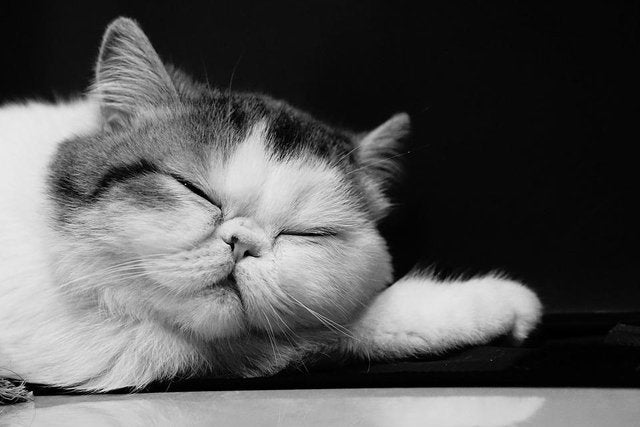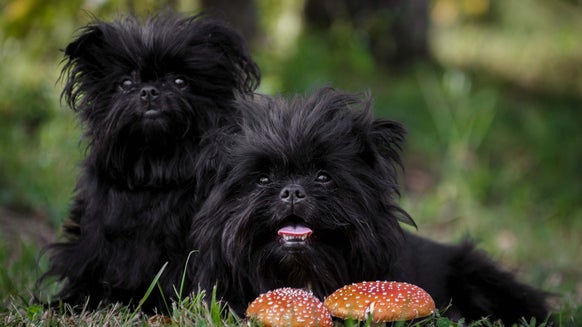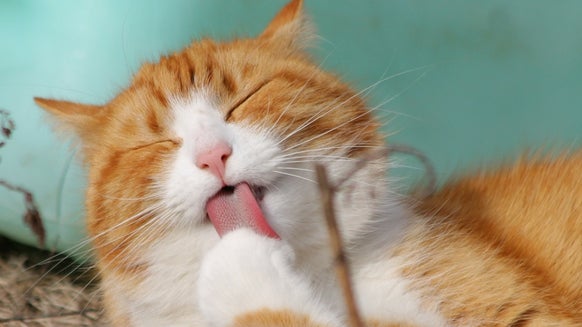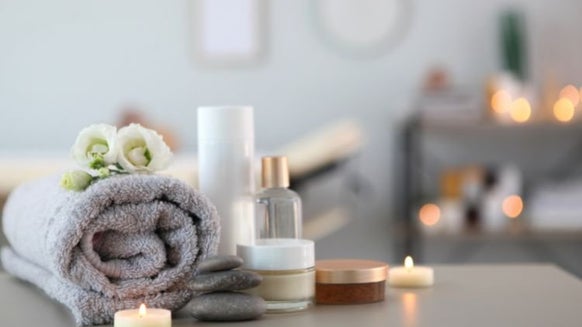Exotic Shorthair Breed Guide

The Exotic Shorthair is a shorthair cat with Persian 'type'. They are shown in the Persian Section at GCCF (Governing Council of the Cat Fancy) cat shows. They are a happy, healthy and mischievous breed. With an easily maintained coat they have quickly established themselves as both a striking show cat and a loving pet. One of the Exotic Shorthair's nicknames is the 'Easycare Persian' because Exotics look like Persians but have short coats which are very soft and plush, and so thick that they stand away from the body due to their sheer density. Although the coat needs grooming it is a much less arduous task than caring for a Persian coat. Exotic Shorthairs make ideal pets for owners who want a gentle affectionate lap cat. There are still only a few hundred of them being born every year, so a wait may be necessary to find the right one, especially if you would prefer one of the more unusual colours or coat patterns.
Buying a Kitten
Having decided that you want to own an exotic, the first port of call would be to contact theExotic Cat Club. The Club Secretary or Kitten Registrar will be able to provide information about recommended breeders. Once you have found a breeder, give them a call to discuss the availability of kittens. They should be able to tell you what kittens are available, and the quality of those kittens. Pedigree kittens normally fall into one of three categories as follows:
Show quality pedigree kittens: These are the most expensive to buy, because their breeders consider them outstanding examples of the breed, based on a standard, and anticipate that they will compete well at shows. If you wish to buy a show quality kitten, consider buying from a breeder with a proven track show record.
Breeder quality pedigree kittens: These are kittens that the breeder considers fail to meet the show standard in some small way, yet they possess enough good qualities, in addition to their pedigrees, to potentially produce outstanding offspring. Breeder quality kittens typically sell for slightly less than show quality kittens.
Pet quality pedigree kittens: These are the most affordable. They may be faultless, but on the other hand they may have some minor flaw that makes them unsuitable for showing or breeding. The "pet-quality" designation does NOT mean that the kitten is less healthy or less desirable to own.
If the breeder has pet quality kittens available, be sure to find out WHY the breeder considers them so, and ask the breeder to point out any faults in the kitten.
You will then need to know...

The age of the kitten: reputable breeders will not sell kittens below 13 weeks of age (in accordance with the GCCF guidelines).
The temperament of the kitten and its suitability to your lifestyle: this is a very important subject, as some pedigree cats will not adjust well to a life without companionship if you are out at work. If your circumstances mean that you are away from home a lot, it is often kinder to consider two kittens to keep each other company The sex of the kitten. Both male and female kittens make excellent pets when neutered. Kittens may be neutered at around 4-6 months of age.
- Has the kitten been vaccinated? You should not purchase a kitten that has not yet received its vaccinations. When purchasing, you should be provided with a certificate of vaccination signed by a vet.
- Will the kitten be insured? Many pet insurance companies now offer breeders a "free" six weeks insurance period. Moving to a new home is a very stressful period for a young kitten, and so insurance is always welcome to overcome any problems within that period.
- Is the kitten registered? Most reputable breeders will register their kittens with the GCCF. This will indicate to you that the kitten's sire (father) and dam (mother) are registered cats. The GCCF has a Code of Ethics that lays guide guidelines for breeding kittens.
- Can I see the kitten? Having questioned the breeder on these points is preferable to visit the breeder at home to view the kitten. It is helpful to view kittens in their home environment. When viewing the kittens, you should not be alarmed or upset if the breeder only allows handling the kitten on offer or asks you to disinfect your hands before touching the kitten; it is for the kitten's protection and is a perfectly acceptable and responsible practice. You should avoid visiting different breeders on the same day, as you could be responsible for cross-infection of kittens.
You should be able to see how the kitten has been reared to determine whether it is well socialised and friendly. Obtaining a well-socialised kitten is essential. Ask where the kitten has been reared. Is it outside in a cattery, or is it inside with constant attention from the breeder? Ask the breeder if it is possible to see the sire and dam of the kitten. Breeders often use male cat owned by another breeder so do not be suspicious if this is the case, and the male is not on the premises. The mother should be available however, and the breeder should have no hesitation in showing you the mother. It is possible that having just raised a litter, she may not look in the best condition. Does the kitten look healthy? You may also be able to see the whole litter. This will allow you to see how socialised and healthy they are. Always ask before handling any kitten. Is the kitten in good health, plump and in good condition? It should have bright, clear eyes and an alert personality. A healthy kitten should not sneeze or show mucous discharge from its eyes and nose. The ears should be clean and free of wax. The anus should be clean and not show any signs of diarrhoea. The coat should be clean and not show any signs of parasite infection. To inspect the coat for fleas, check in the coat for grains of black dirt, which is flea excrement. Play with the kitten and check how it reacts. Is it playful and relaxed? If it is fearful and unused to being handled, look elsewhere for a more socialised kitten.
Ask the breeder if their cats are free of Feline Leukaemia Virus (FeLV), Feline Immunodeficiency Virus (FIV) and Polycystic Kidney Disease (PKD). Breeders should be able to give the assurance you need about these conditions. Ask to see the kitten's pedigree. This is a record of its ancestors. It should show the names of the kitten's parents, grandparents and great grandparents.
Ask to see the vaccination certificate. The kitten should have received two vaccines, usually with a 2-3 week interval in between. The standard vaccination provides protection for Feline Panleucopaenia (Feline Infectious Enteritis), Feline viral rhinotracheitis and Feline calicivirus (Cat Flu). Some breeders may also vaccinate against feline leukaemia as well.
Do not feel rushed to make a decision. Most breeders will be happy for you to go away and think about the kitten. After all, it is a very long-term commitment for you to provide love and care for many years. If the kitten is not yet old enough to leave home, the breeder may ask for a deposit to secure the sale of your chosen pet. Again this is quite acceptable, but ask for a written receipt for the deposit and if the deposit is refundable should you change your mind.
Grooming

Despite being called the "lazy man's Persian", Exotics do not require the thorough daily grooming commitment of their Persian relatives, but their coats are not entirely maintenance free. Exotics DO moult and shed their coats, and do require grooming on a regular basis. Regular grooming is a good practice, as it will remove loose, dead hair, and also aid in preventing hairballs. It also gives you the opportunity to check your pet for any parasites such as fleas. You should check your Exotics ears on a weekly basis (if not more often). Use cotton wool to gently wipe away any dirt or wax visible. Never poke cotton wool buds into the ear canal as you could cause injury. Check your cats teeth and gums on a regular basis. Healthy gums are pink; diseased gums are red, tender and swollen. Consult your vet if you have any concerns.
Check your Exotics’ nails on a regular basis and trim them when needed. Your vet can show you how to trim the claws. Neglected untrimmed claws can curve under and grow into the paw pad, causing swelling and possibly an abscess.
Breed Standard
General type standard: this is the general standard of points applicable to all exotics including solid colours and tipped coat colours. The variations to take into account Tabby and all forms of recognised bi-colour coats are shown below.
Head and Ears: Head round and massive with good breadth of skull, well balanced. Small round tipped ears, set wide apart and low on the head, fitting into the rounded contour of the head, not unduly open at the base. Full cheeks; round forehead. Short broad nose of even width with stop (break). Nose leather fully formed. Strong chin and full muzzle with broad and powerful jaws, without a "pinch". Short thick neck.
Eyes: Large full round eyes, brilliant in colour and set well apart. Bold and not deep set.
Body: Large or medium in size, of cobby type; low on the legs. Broad deep chest; massive shoulders and rump; well-muscled.
Legs and Paws: Short thick strong legs. Large round firm paws, toes carries close, five in front, four behind.
Tail: Short, but in proportion to the body length.
Coat: Dense, plush, soft in texture, full of life, stands out from body due to density, not flat or close lying Medium in length, slightly longer that other Shorthairs, but not long enough to flow.
The Exotic Cat Club aim to promote the interests and to advise on the breeding, exhibiting and welfare of the exotic cat. Visit their website for more information about the club.









